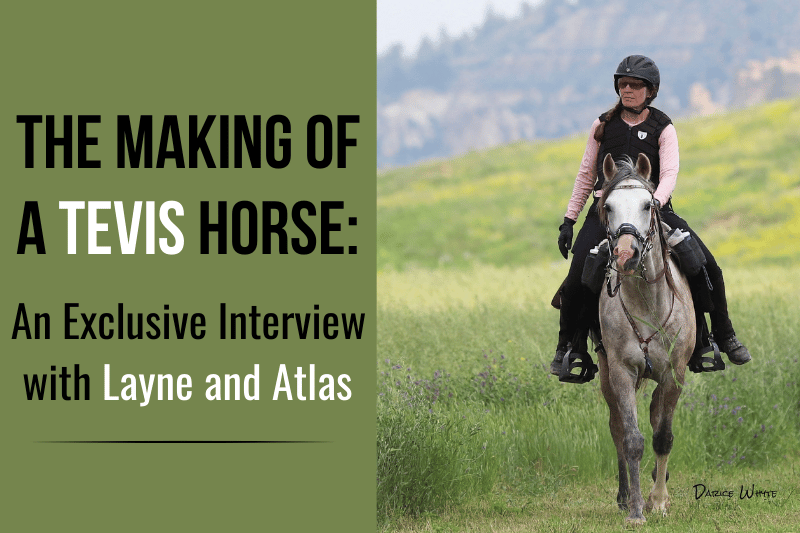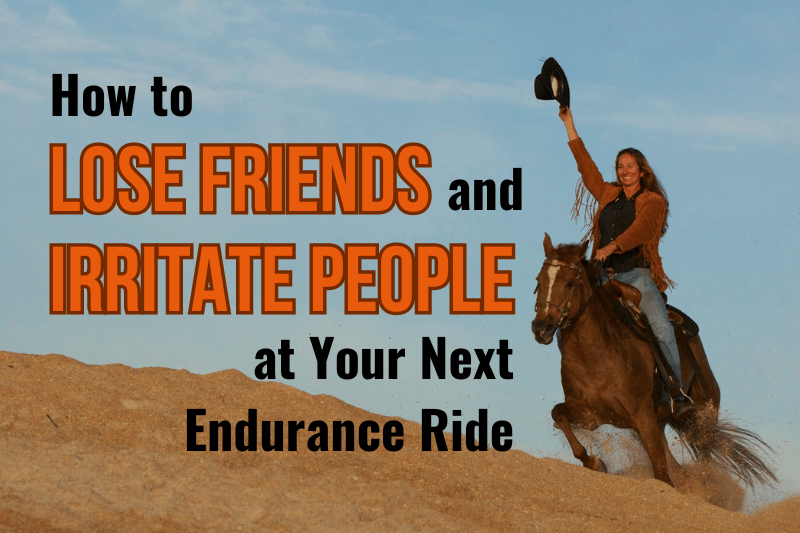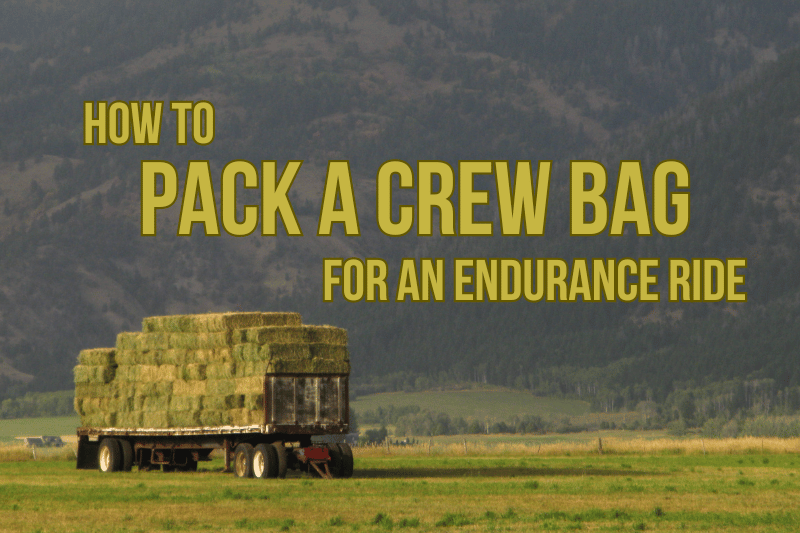As the clock to Tevis 2024 ticks down, anticipation in the endurance world is ticking up. Around the globe, bucket-listers and veterans alike are caught up in the dream.
Here at Sweaty Equestrian headquarters, my days are abuzz with preparations, from getting chili in the freezer, to sunscreen in my saddlebags, to my nerves under control. Amid the hustle, I set aside time to focus on the epicenter of it all: the horse.
What does it take to get a good prospect to the starting line of the famous (infamous?) Western States 100 Mile Trail Ride?
I sat down with Atlas and his owner, Layne Lewis, to ask.
The Making of a Tevis Horse
The Sweaty Equestrian: Atlas, let’s start with you. How are you feeling about taking on the Tevis Cup?
Atlas: I’m ready, man. So ready. F*ck, I was born ready.
Layne: Atlas! Language!
Atlas: Sorry, sorry, whatever. But I was! Look at my dad. DWA Ziffalat? Ever heard of him? He was fast! I look just like him, see?
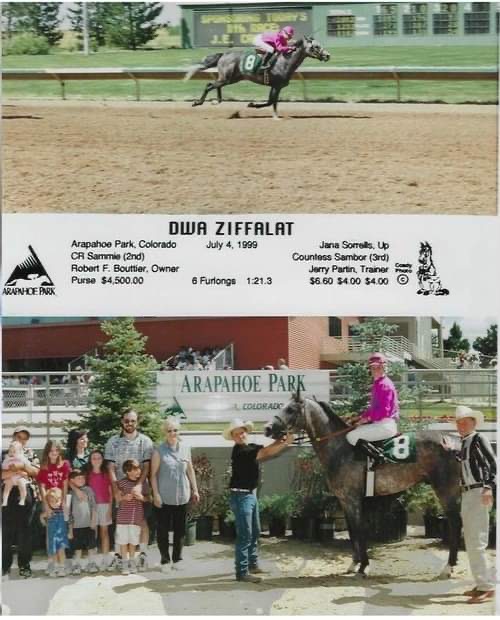
TSE: Your dam was no slouch, either. She logged over 1,200 AERC miles with Sue and Dennis Summers between 2007 and 2013. Layne, how did you come by Rosie?
Layne: Sue was one of my mentors, and I was crewing for them at the National Championship ride at City of Rocks a number of years ago. Rosie had been a little off and Sue was going to retire her.
Sue did not raise foals at the time, but had told me, “If I was going to breed a mare, it would be Red Rosie.” She knew that I did breed a little and asked me if I wanted her. Of course, I was thrilled and humbled and took her home with me from City of Rocks.
TSE: How did you come up with the idea to breed Rosie to Ziffalat?
Atlas: Eww, Moooooom! Do we really have to talk about this?
Layne: I had been following the Drinkers of the Wind Arabians breeding program, so I called Archie (Robert Bouttier, owner and operator of DWA, who is much missed). Rosie’s sire, Monarch, was part of his program and I knew he would be a great resource. Archie recommended Ziffalat.
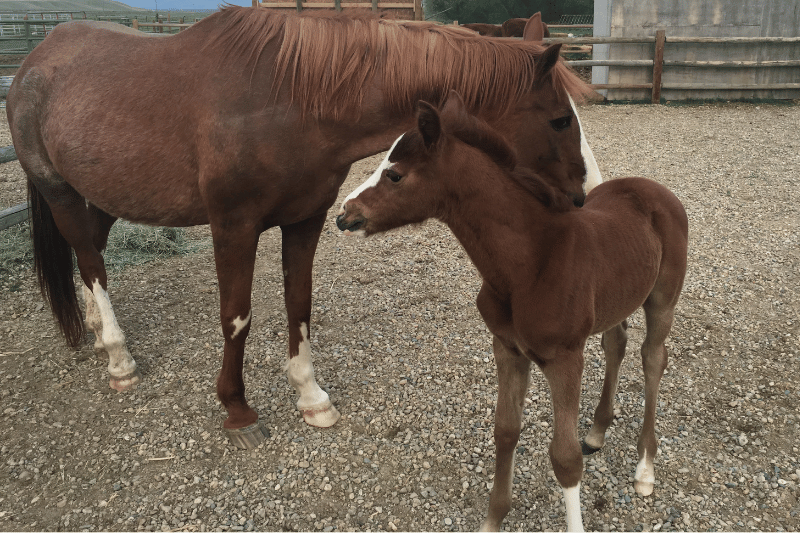
TSE: Did you have specific traits in mind when breeding for the horse that became Atlas?
Layne: I did! I wanted a calm, athletic, smart horse…
Atlas: I’m blushing.
Layne: …one who would look forward to seeing me come out of the house, and one who would eat up the trail but would not be crazy out there.
You know how the Bedouins bred their desert Arabians for good-natured companionship and loyalty, as well as athleticism? I wanted “tent horses” that would be safe with my grandchildren, but also athletic and tough.
TSE: How did you choose Atlas’ name?
Layne: My husband named him!
Atlas: That dude who glues shoes on my feet? Huh. What were you going to call me if I was a filly?
TSE: Moving on…
Atlas: How about Atlasta? As in, at-last-a perfect horse?
TSE: Atlas is gelded now…
Atlas: You had to bring that up.
TSE: …but he has one colt (plus a grand-filly) on the ground and hopefully more on the way. What are you observing about his progeny?
Layne: So far, they all seem to be of the same personality and build. Super sweet and personable as foals, and very willing to be worked with. Also, so very athletic!
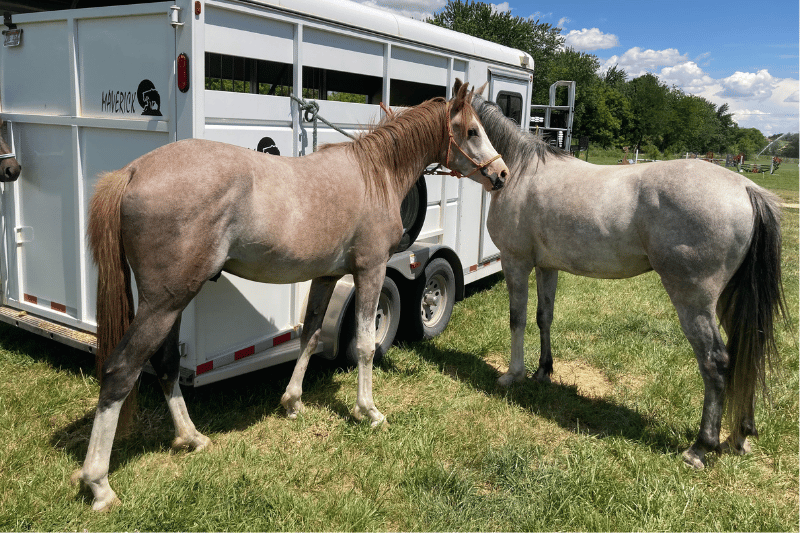
TSE: People always want to know: How much does breeding matter? Nature vs. nurture. Do you tend to look more at bloodlines or the individual horse that’s standing in front of you?
Layne: I think it all matters. I am very fortunate to have expert breeders around me to confer with, and I also have enough experience on my own to know that there is more than just the breeding.
I have been given a number of horses over the years — some do well, some do not. Most are well-bred but some just do not have what it takes to love the trail. My Tevis horse, Harley, has a brother that was one of those. Very talented — he did a couple 100s, including Big Horn — but he did not love it. So, I retired him. I can’t ask a horse to do these hard things if they don’t love it also.
TSE: How did you prepare Atlas, as a foal, to grow into a strong endurance prospect?
Layne: I really believe that raising the foals in the hills of our ranch makes a difference in how they develop. Just yesterday morning, I saw our 2024 filly fly down the mountain, and I know that this means she is already developing the body awareness and strength to run in the future.
Atlas: Why are we talking about her? I thought this interview was about me.
Layne: Of course, feed is critical as well. We can’t expect them to do well if they aren’t fueled correctly.
As for training, we start all our foals with a lot of in-hand work. I was a trail runner for years and would always have a horse with me when I went out, no matter how short the run. After my spinal surgeries, I would take them on walks. I think it has helped them learn how to hold a steady pace and how to go not at their pace, but at mine.
Atlas: Which, for the record, is slooooow.
Layne: Even now, while I can’t walk, I have a dear friend who comes and runs with my youngsters while I sit on the deck. My plan as I recover from this smashed leg is to do ground work with Atlas’ son, three year old Titan, and Titan’s 6-month old filly Arti, until I can ride again.
TSE: What kind of start did Atlas get under saddle?
Layne: I usually have them run with me, saddled, at three, but I don’t ride them much until they are four. We might get on them at three, but I do very little riding until after age four. We do a lot of ground work with the foals so they are safe and knowledgable.
TSE: Some of Atlas’ training has been a bit unconventional for an endurance horse. What did you observe about Atlas that informed your training decisions?
Layne: I am really good at conditioning the horses, especially with the areas I can ride from right outside of my house. With Atlas, I felt that he was a bit pushier than others I’ve started. With his having been a stallion for for five years, it made sense.
I decided to get some help and called a trainer who did more dressage and jumping to see what that would do for him. It turned out to be a brilliant move. Atlas loves jumping, and once I saw him on the course I was thrilled, knowing this would really help his mind and build his core. He loves it!
Now, dressage…
Atlas: Barf. Next!
Layne: Right. I wanted him to do to learn all the things, but he really hates arenas. We did have him do some Légèreté this year to help him him learn how to manage his frustration.
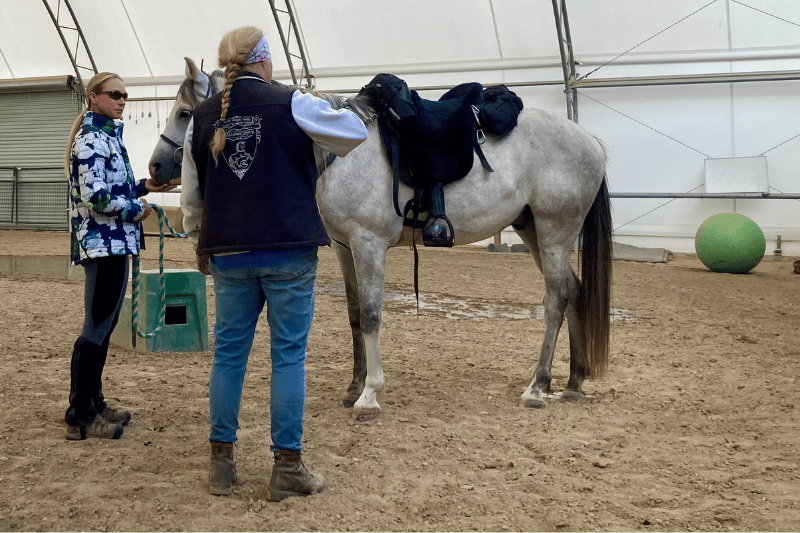
Layne: Also, Carol Giles at Sabiq Arabian Ranch took him for a few months while I was out from my lower back surgery, and she did wonders with him.
TSE: You’ve ridden Atlas in LDs, 50s, and a couple hundreds, and you’ve done very well together. What stands out to you about those experiences?
Layne: He is so opinionated and emotional at times! I love it, but we need to give him the skills to manage his frustration and emotions when he disagrees.
Atlas: Yeah, yeah. But tell them how strong I am! You always say how I ‘just don’t seem to get tired’ and I always have a ‘pep in my step.’ Which sounds very cheesy, by the way. I prefer to call it a ‘strut in my butt.’
TSE: What’s your favorite Atlas story to tell around the campfire?
Atlas: Oh, here we go…
Layne: I was at Fort Howes last year, the night before his first 100, and Harley busted both horses out of their pen. I was woken up by the ride vet. I ran outside and called Atlas’ name.
He lives in an 80-acre, hilly pasture, so often I have to call him. Half the time, he looks at me and says, “Nope! Still going to eat out here!”
But that night, when he heard my call as he and Harley were galloping away, he stopped, turned toward me, and they ran back! Of course, they flew right by me into an alfalfa field, but I was so relieved!
Atlas: Whatever. I wasn’t going to go over that cattle guard, anyway.
TSE: What steps have gone into Atlas’ readiness for Tevis this year, specifically?
Layne: Well, he ended last year with a 100, so I knew he had that base of fitness. I just started riding him this spring like I would any other year. You have to remember that I was coming off of another spinal fusion in November, so I did what I could and we built up to what was to be a 50 at the Eagle Canyon ride.
You know the rest! After I was sidelined, you did the Mary and Anna 100 with him, plus a 50 at Strawberry Fields Forever. He’s very fit, and we’re at the point now where lots of food and rest are the most important.
TSE: What’s it like to see him about to head into this challenge with a different rider?
Layne: I oscillate between bursting with pride and being sad that I am so lame. Like, literally lame! I would rather have him being ridden, and I can think of no better rider than you for him…for lots of reasons. Strength, grit, personality…all the things.
TSE: Now I’m blushing.
Layne: I do sometimes get sad that I am sidelined, but I am so happy that he and you get this opportunity together. I am excited to have him ridden to his potential, and to see what he can do as he gains experience and fitness.
TSE: How about a quick update on you? How’s your recovery coming along?
Atlas: Hello? This is supposed to be about me?
TSE: We’ll get back to that. Layne, how are you feeling as you prepare to travel to Tevis with us?
Layne: I am really in good spirits! I have my follow-up appointment the Tuesday after Tevis to see if I can start putting weight on my leg. The plan, once I can walk, is to focus on building my strength back up with walking, cycling and lifting, and also doing lots of ground work with the younger two horses.
I remain in great spirits due to my ability to see the light at the end of the tunnel, as well as my resilience that comes from years of athletics and life experience. Also because I have great folks in my life and my horses are being worked by friends!
TSE: Okay, Atlas. Your turn. What are the keys to making Tevis a great ride for you?
Atlas: Omigod, finally. I am so excited. You have no idea.
TSE: I’m sure we’ll find out…
Atlas: So what I really want is to be part of the team, right? I want to help make the decisions.
TSE: You can make all the decisions…as long as they’re good ones.
Atlas: Right, right. That. Just let me go my own pace once in a while, okay? The fast one? Be a good rider and respect me, and I’ll do anything for you.
TSE: Sounds like a deal, Partner.
Atlas: Oh, hey, also? Lots of carrots.
TSE: They’re on the list. Layne, any last thoughts?
Layne: Remember what I said about the ancient Arabians that were bred for desert warfare? Atlas really is that horse – strong and willing and sensitive, and he has to be handled with competence and respect.
Atlas: You got that right.
TSE: She always does, Atlas. She always does. Thank you both.
Atlas: Can we go now? Like, fast?
TSE: Sure, dude. Almost. I think your mom has one more photo to share.
Layne: This is one of my all-time favorites.
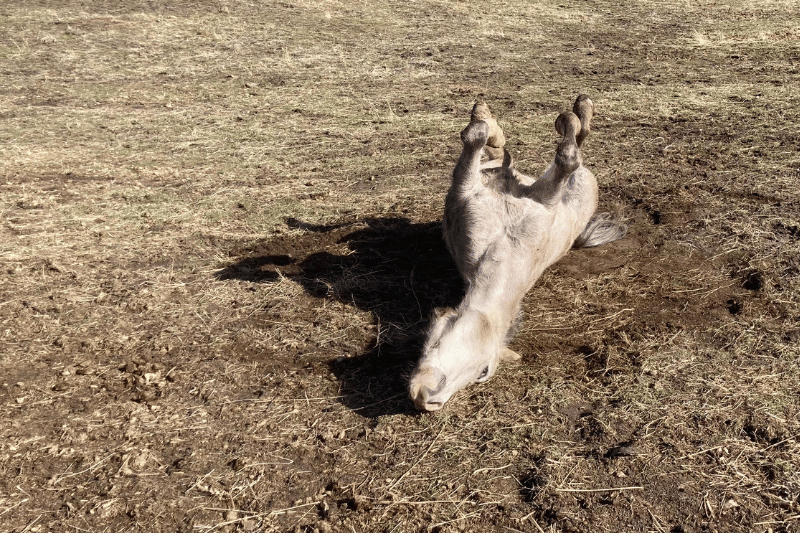
Atlas: Moooooooom!
Enjoying the blog? Sign up for my newsletter to get exclusive content and never miss a post.

